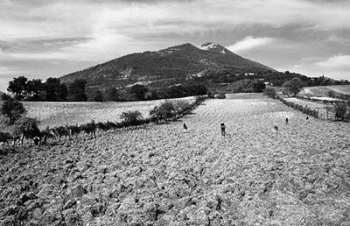American Journal of Archaeology | The Journal of the Archaeological Institute of America
You are here
Tracing Late Roman Rural Occupation in Adriatic Central Italy
January 2009 (113.1)
Tracing Late Roman Rural Occupation in Adriatic Central Italy
This paper examines the identification of rural occupation and the changing settlement pattern during late antiquity in the central part of Adriatic Italy. Archaeological field survey has proven to be the most efficient tool to map ancient settlement patterns on a regional scale. Although the methodological approach to map and classify Roman rural settlements has undergone many advances over the years, the identification of Late Roman occupation and the evaluation of the data remain problematic. Recent survey work in the Potenza Valley (Picenum) provides an excellent case study, demonstrating the problems and pitfalls connected with the identification of Late Roman rural settlements. To optimize site detection, the Potenza Valley Survey project invested in the exhaustive analysis of diagnostic finds from stratified contexts of the Roman colony Potentia. Following the study of the surface scatters, the settlements were classified according to a site typology, creating a third dimension in the detected occupation pattern. Broader historical questions could be addressed by integrating the survey results into a wider framework, making use of information from excavated sites and written documents. This approach allowed us to sketch the particularities of the central Adriatic countryside during late antiquity, demonstrating the relevance of regional diversity within this period of transformation.
Tracing Late Roman Rural Occupation in Adriatic Central Italy
By Hélène Verreyke and Frank Vermeulen
American Journal of Archaeology Vol. 113, No. 1 (January 2009), pp. 103–120
DOI: 10.3764/aja.113.1.103
© 2009 Archaeological Institute of America


